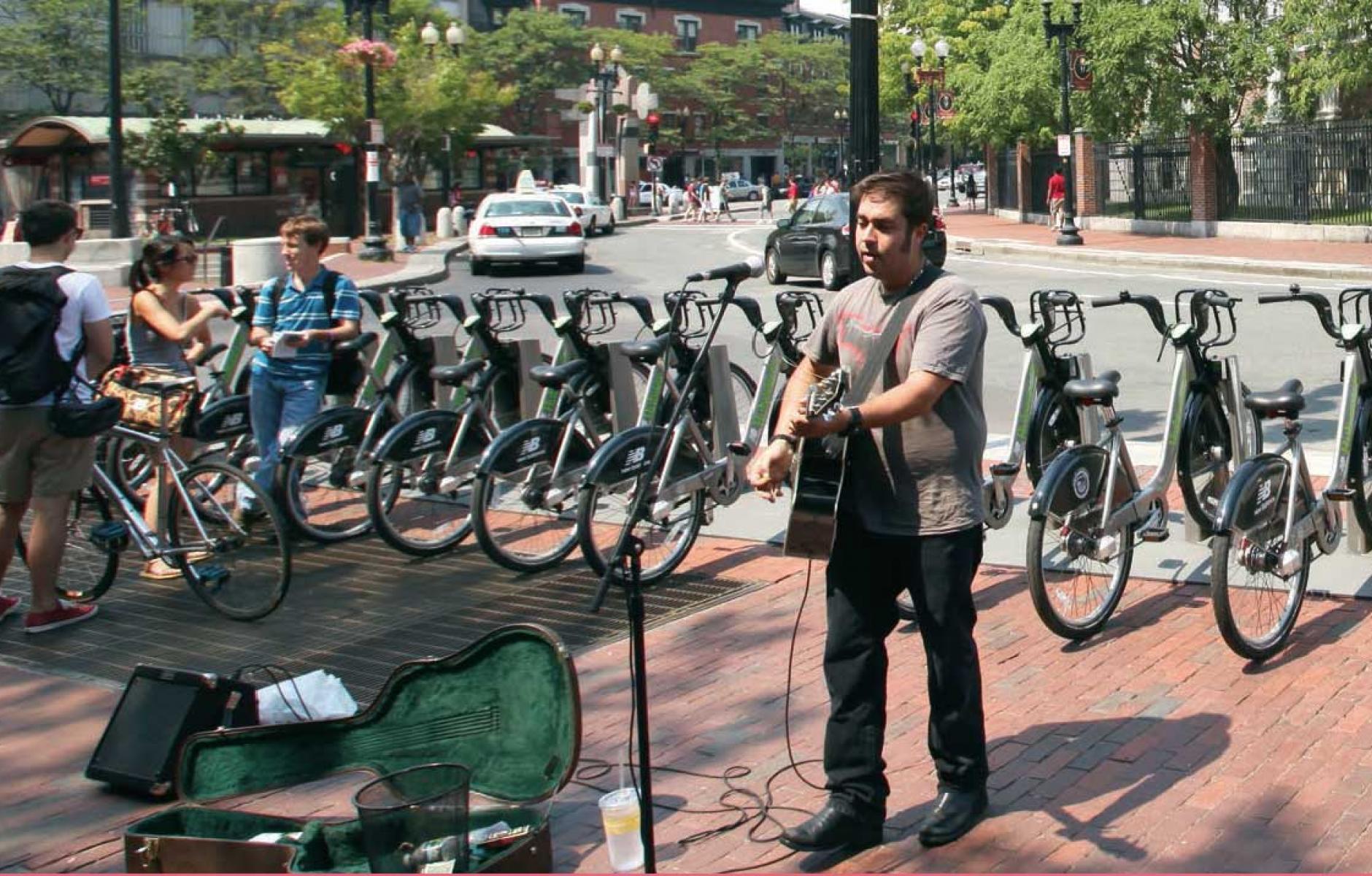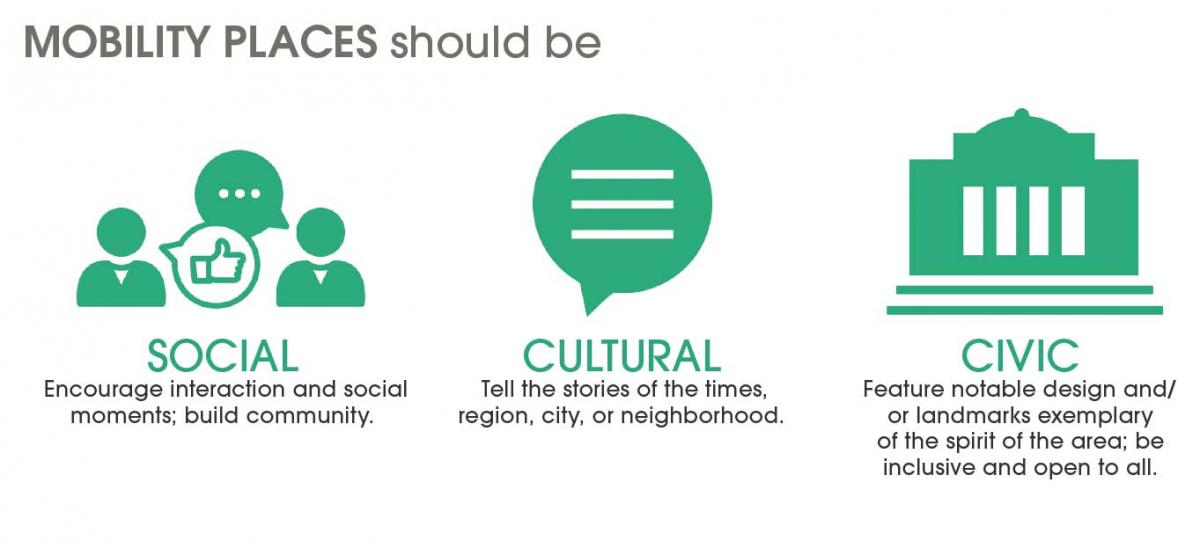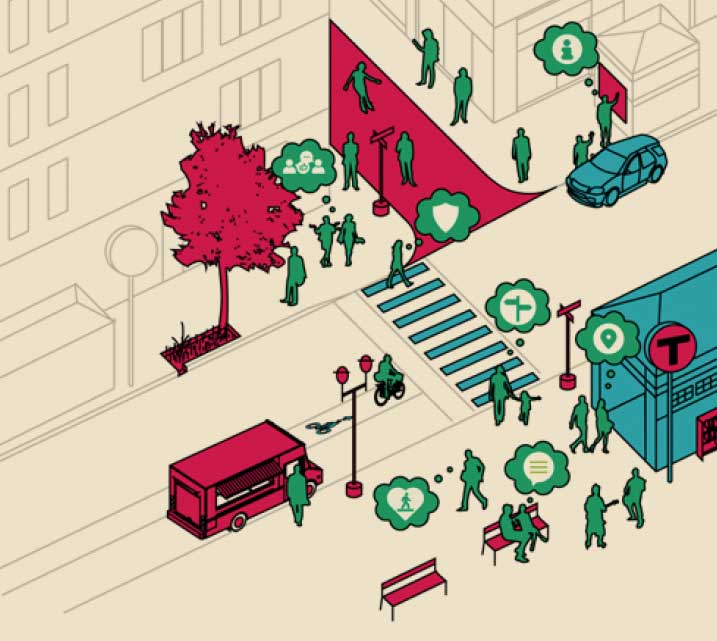
Reclaiming streets for people
When fragmented development and neglect for civic spaces leads to the loss of “organic community,” the situation calls for a public realm that creates a new generation of “third places.” Thanks to the innovative Guide to Placemaking for Mobility, Boston is moving in that direction across the more than 800 miles of roadway maintained by the Boston Transportation Department (BTD).
A public-private initiative adopted by BTD as part of the city’s Go Boston 2030 plan, the guide offers a matrix of strategies and community-driven activities to reclaim streets for people.
As the guide points out, Boston’s streets comprise hundreds of thousands of acres of publicly owned open space, many of which can be improved to make a real impact on neighborhoods. Sidewalks, plazas, and incidental excess space can often be transformed into vibrant cultural and civic places.
The guide connects “infrastructure and transportation funding with projects and design initiatives that do more than just incrementally help people get around—we’re empowering ourselves to extend the impact of our investments into the city’s social, cultural, and civic vitality of our citizens and visitors,” says Chris Osgood, Boston’s Chief of the Streets, Transportation & Sanitation.

Places that encourage social exchanges and connections between people, cultural expression, and accessibility are highly valued by the resource, which provides metrics to analyze success (e.g. does this place feel inviting, does it encourage social interaction?).
While a wealthy city, Boston has diverse and less-well-off neighborhoods that have often been overlooked. This plan allows communities to decide what placemaking tools are right for them. The guide offers a menu of tactical approaches to test ideas quickly.
“This tool will enable us to implement as many as three major tactical urbanism projects [in the coarse of a year] that tap local creative talent, reflect our City’s great diversity, and serve as a global model for innovative design and urbanism,” notes Vineet Gupta, director of Policy and Planning for BTD.
Widely recognized strategies like streetscape improvements, new plazas and greens, and techniques are bolstered by less well-known amenities including public games, workout stations, public art projects, community events, and pop-up elements like “parklets” and seasonal installations.

Above all, the plan commits to a vision of streets in cities as public spaces, rather than just pipes for mobility. This citywide guide empowers citizens and officials with the tools to reinforce connections in a large and diverse city.
The Guide to Placemaking for Mobility won a CNU Charter Award in 2017.




